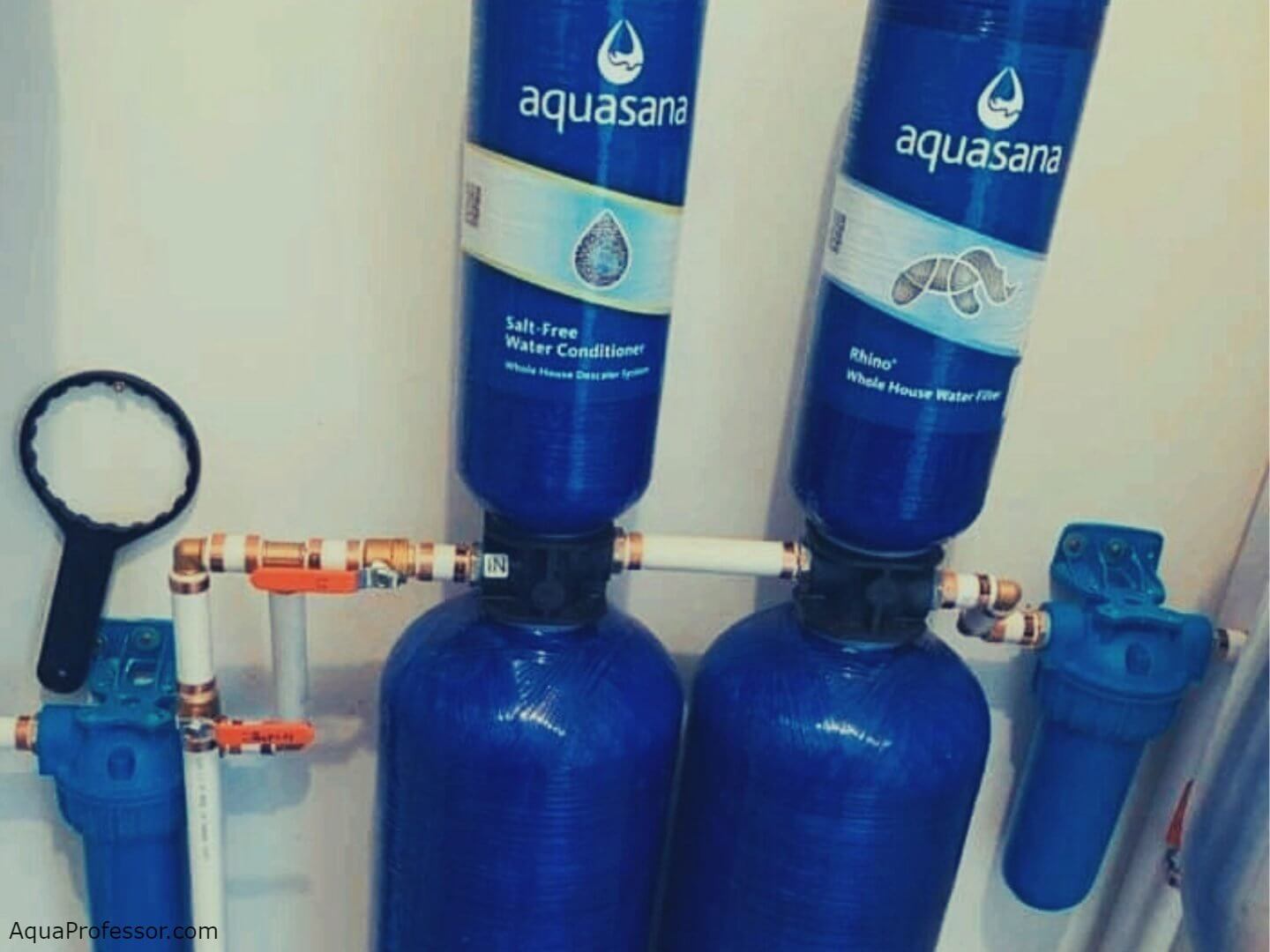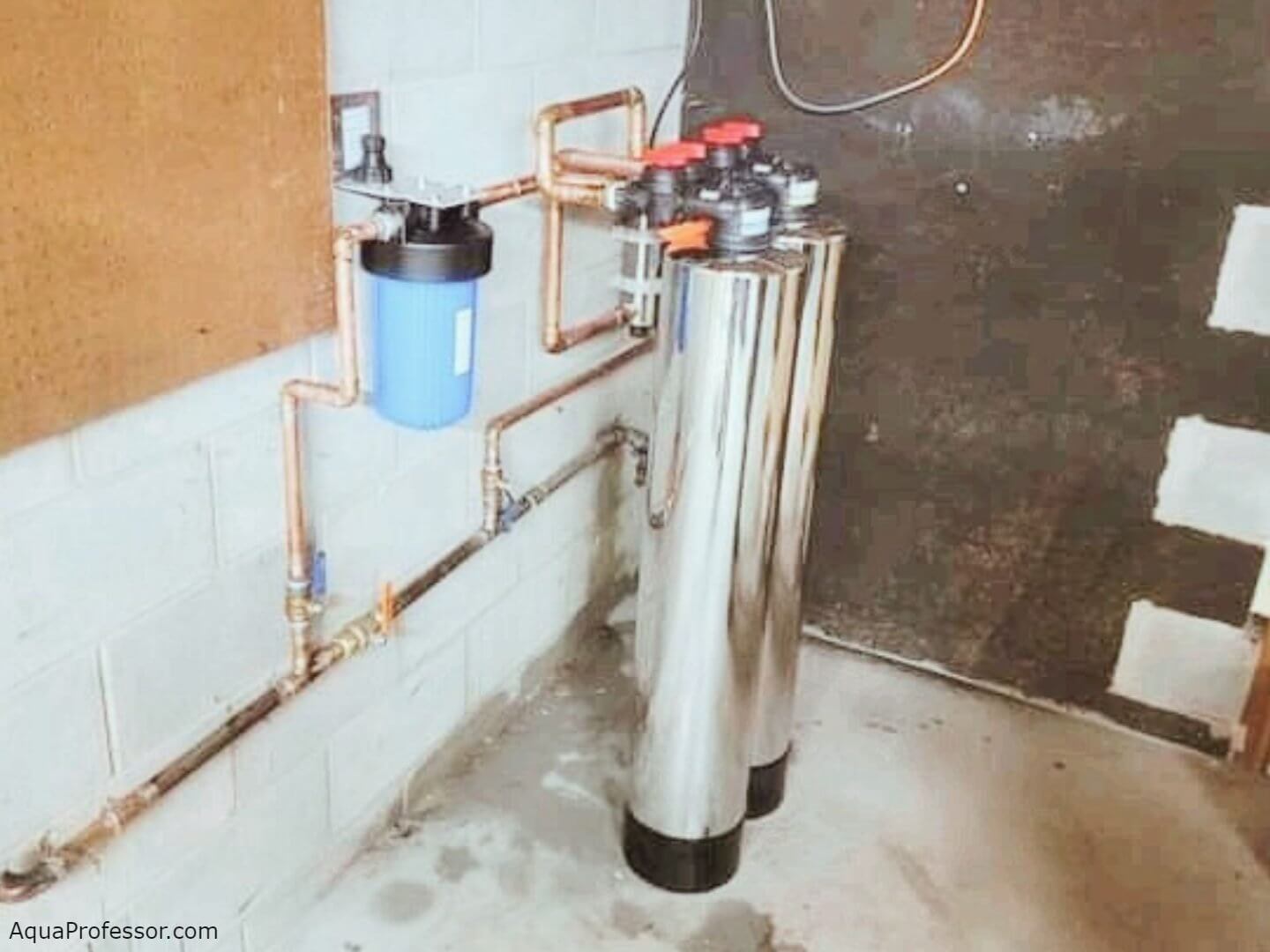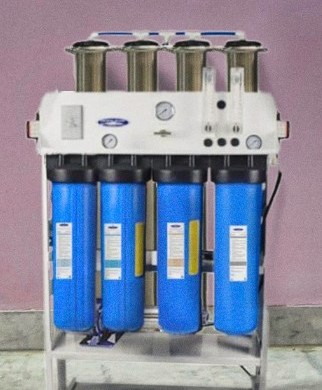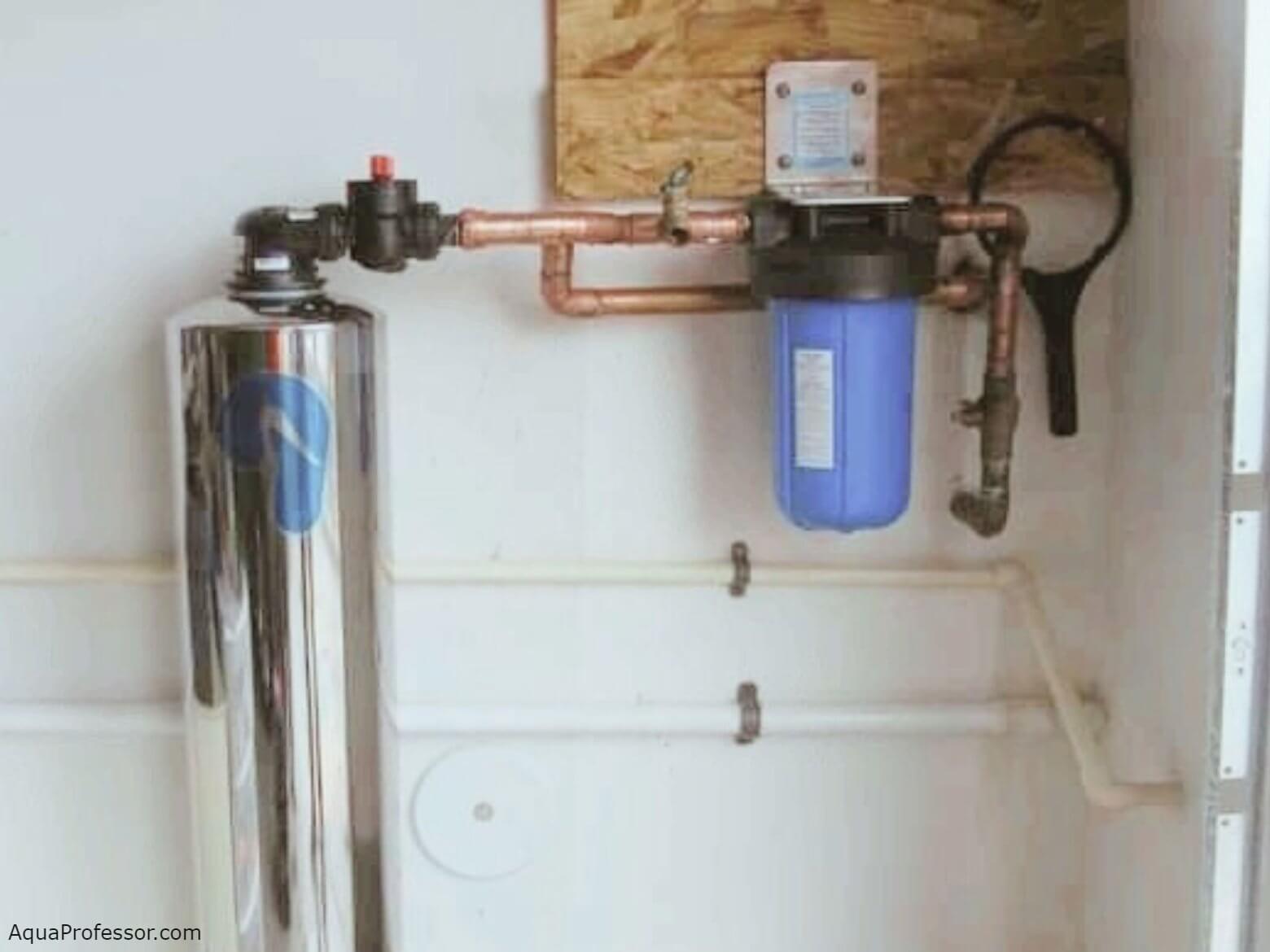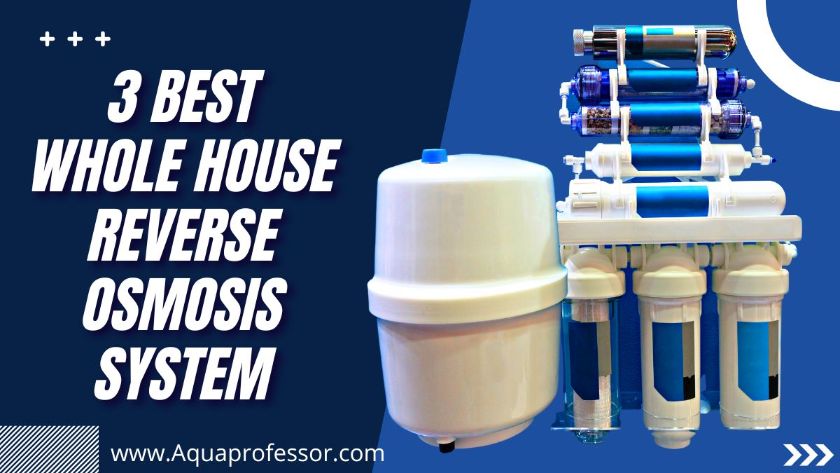
As a customer, finding the best whole-house reverse osmosis system for your home is really challenging.
Take a sigh of relief as we have tested numerous water treatment systems to pick just the right ones for you.
3 Best Whole House Reverse Osmosis Water Filtration Systems: Quick Preview
- Best Overall
Aquasana EQ-1000
- It can filter 1,000,000 Gallons of Water over a period of 10 years.
Zero wastage of water due to no drainage cycle for cleaning
3 stages of filtration to give the healthiest tasting water.
It can remove 97% of harmful dissolved impurities like chlorine, silt, heavy metals, and pesticides. - Budget Choice
Pentair Pelican PC600-P
- It can filter 600,000 Gallons of Water over a period of 5 years.
Zero wastewater is generated due to an eco-friendly approach.
Water passes through 3 stages of filtration before being supplied.
It can remove 100+ types of unwanted contaminants and 97% chlorine from local water. - Premium Choice
Crystal Quest WH Filter
- It can supply 200 – 7000 Gallons of water, depending on the chosen model size.
2:1 Clean water to Wastewater Ratio per filtration cycle.
4-stages of filtration are used to purify incoming dirty water.
It eliminated harmful impurities like chlorine, chloramines, heavy metals, dissolved solids, and microorganisms.
Here's How We Test Products At Aquaprofessor
- 3 Best Whole House Reverse Osmosis Water Filtration Systems: Quick Preview
- Best Whole House RO Systems: Detailed Reviews (2024)
- How Will I Define A Whole House RO Filtration System?
- How Does A Whole House RO Filtration System Work?
- How To Choose Whole House Reverse Osmosis Systems? [The Expert Buying Guide!]
- Whole House Water Filters vs Point-Of Entry Filters: Differences Explained!
- Best Whole House Reverse Osmosis Water Filter System: FAQs
Best Whole House RO Systems: Detailed Reviews (2024)
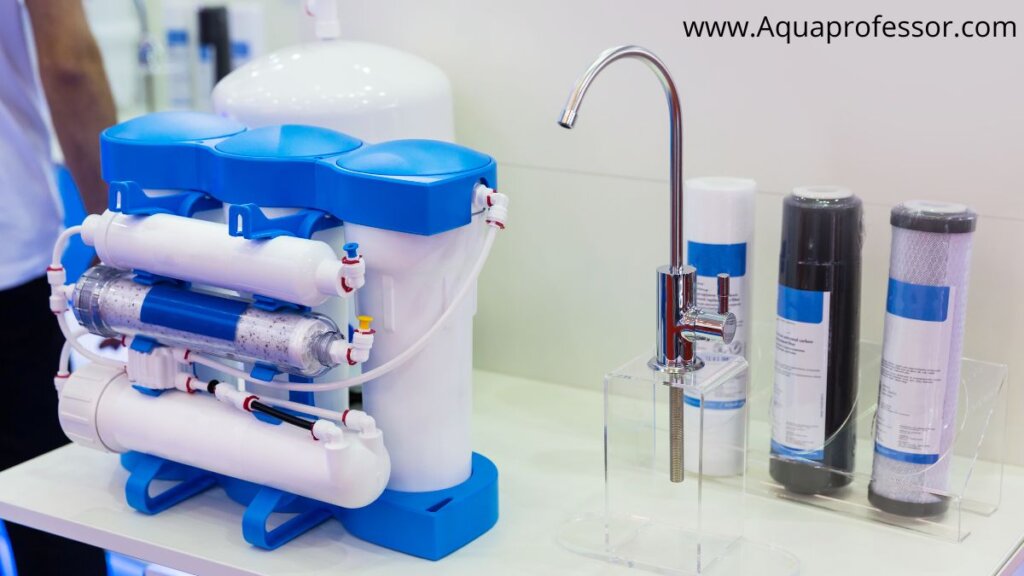
Whole House Water Filters are pretty cool, right? They are an excellent way to produce clean drinking water for the entire household.
So, say goodbye to your water woes, as you will have nothing to complain about once you get your hands on the following water filter. Keep reading to get an honest insight into the working of our top 3 picks:
1️⃣ Aquasana EQ-1000 Whole House System: Detailed Review
Have you started to dream of a brighter future with Aquasana EQ-1000? No, we are not mind-readers, but yes, we can tell it is a great pick. The promising RO technologies for water purification are competent enough to remove a wide range of impurities.
Pros
- Massive Filter Capacity of 1,000,000 Gallons of water over 10 years.
- NSF/ANSI 42 Standard Certification
- Excellent Flow Rate of 7 GPM
- Smart RO technology
- Removes 97% impurities
- Professional grade bypass and brass fittings.
- Eco-friendly and Cost-efficient
- Larger pre-filters and upgraded media
Cons
- Expensive
- Trained professional required for installation
- Cannot remove all types of contaminants
Connect this filtration unit to your primary water supply line and see the wonders it can do for your home. Let’s look into further details without further ado.
Also Read: The Ultimate Comparison Between Aquasana and Berkey Water Filters
Filtration Capacity
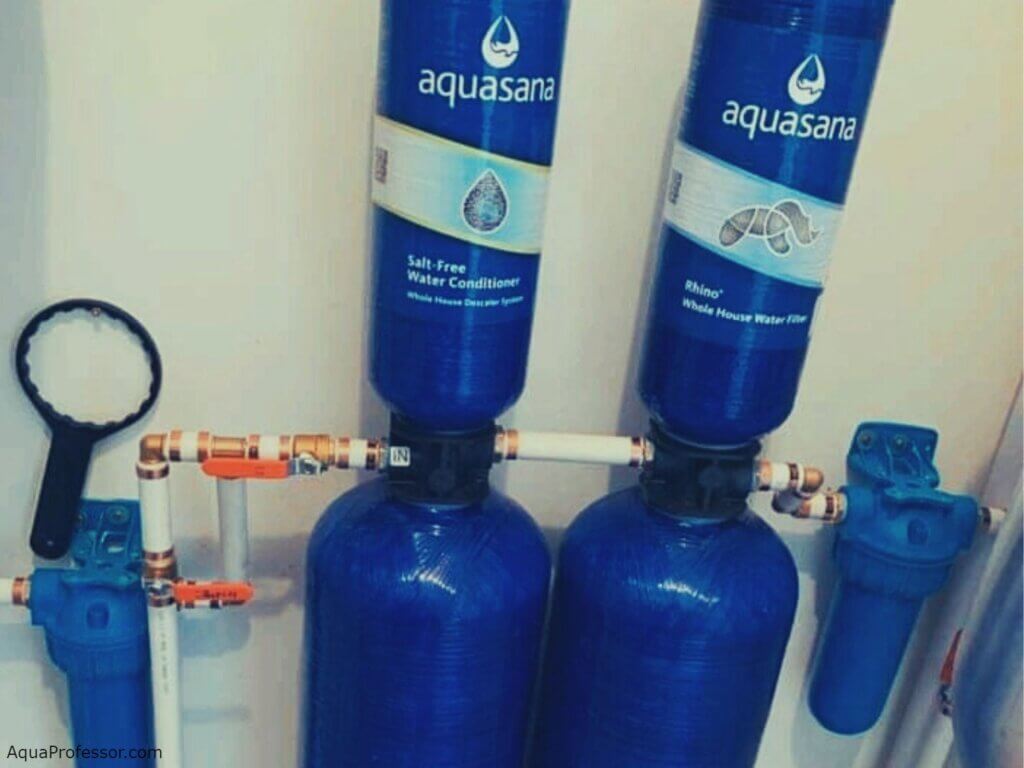
The filtration capacity of the Aquasana EQ-1000 Whole House Water Filtration unit is a whopping 1 million gallons of clean water over a period of 10 years. Aquasana has not provided the Gallons per day data as day-to-day water demands keep changing.
You can do all household chores quickly and efficiently with an excellent flow rate of 7 GPM (Gallons Per Minute). This unit is sufficient to fulfill the needs of a 6-8 member family without witnessing a significant pressure drop.
The advanced dual tank compact design with an up-flow mechanism maintains the constant pressure and direction of the water. Thus, an excellent uninterrupted flow is received from this Aquasana filter system.
It requires 20-100 psi natural pressure to filter water properly as it is not electrically driven. Otherwise, you may need to plug in a pressure pump with automatic water sensors to improve the water flux rate.
Wastewater Ratio
There is zero wastage of water due to the absence of a back-flushing or drainage cycle. This salt-free filtration system is eco-friendly and cost-efficient.
Water impurities are simply adsorbed on the filter media, and when the filter is thoroughly utilized and saturated, you can replace it with a new one.
Thus, no water is wasted on the weekly cleaning of filters. You can clean the tank on the day of filter replacement if required.
Also Read: 3 Best Filtersmart Whole House Filter + Conditioners [Honest Reviews]
Stages Of Filtration
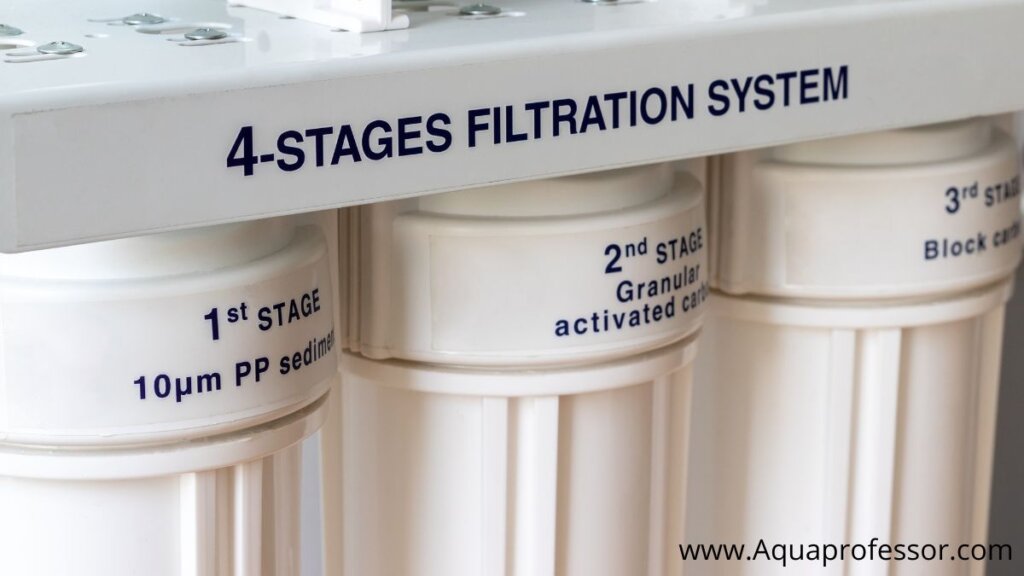
In the Aquasana Rhino Filtration System, dirty water passes through 3 stages to finally become clean and healthy. This 3-stage multiple tank purification process optimizes contact time between water and filter media.
Every previous stage enhances the life, efficiency, and production rates of the next stage. Multiple tanks prevent mixing or clumping that occurs in other single tank systems. Here are the 3 stages:
Besides, you can always go for optional upgrades. You can attach a UV filter, Calcite filter, Neutralizing filter, or a Sub-micron post filter to your existing unit for even higher quality clean water.
Also Read: Do You Live In Florida? Find Whether Your Tap Water Is Safe To Drink [Solutions Included!]
Removal Of Contaminants
Aquasana filters have the standard certifications from NSF/ANSI, proving their filtration capability. It removes up to 97% of harmful contaminants, including chlorine, sediments, chemicals, dissolved solids, heavy metals, rust, silt, and pesticides.
All these contaminants are detrimental to our health and cause diseases. Thus, treatment of such water is necessary before consumption. Lucky for you, Aquasana’s whole house system is suitable for the majority of people and water types.
Heads Up!
Aquasana EQ-1000 Whole House System holds an NSF/ANSI Standard 42 Certification. It comes with a 90-day satisfaction guarantee and a 10-year warranty. This warranty is void if you install the unit yourself.
2️⃣ Pentair Pelican PC600-P Whole House Water Filter: Detailed Review
Pentair Pelican’s Whole House Carbon Series Filters can give crystal clear, great-tasting water from every faucet in your home. Pentair enjoys a good reputation in the market for its high-quality and budget-friendly products.
Let’s take a deep dive into the working of this wonder machine and unfold its secrets.
Pros
- Filtration Capacity of 600,000 Gallons of Water or 5 years.
- Great Flow Rate of 8 GPM.
- NSF/ANSI Standard 42 Certified.
- Low maintenance
- It removes 100+ types of contaminants and 97% of chlorine.
- Does not waste water
- Easy Filter Replacement
- Eco-friendly
Cons
- You cannot install it without a skilled professional
- Pre-soaking of activated carbon media takes two days.
- Light plastic fittings
- Not practical for very hard water
The filtration unit requires 25-80 psi pressure to filter correctly. If your incoming water supply does not have proper water pressure, you can install an automatic booster pump to maintain the flow rate.
Filtration Capacity
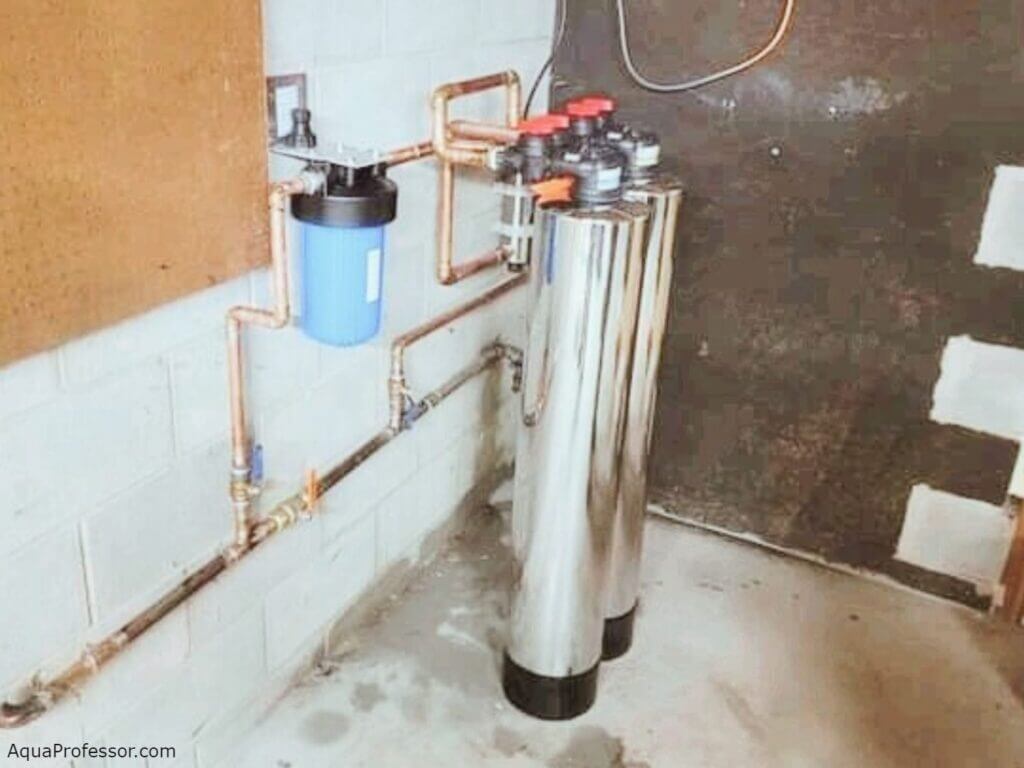
Pentair Pelican PC600-P Whole House Water Filter will supply you with 600,000 Gallons of water over a period of 5 years. It lasts as long as the primary carbon filter lasts; after that, the filter is replaced and cleaned.
You will also receive a tremendous flow rate of 8 GPM (Gallons Per Minute). This flow rate is sufficient for a family of 3-5 members. Even if multiple faucets open simultaneously, you will not see a significant drop in water pressure.
Wastewater Ratio
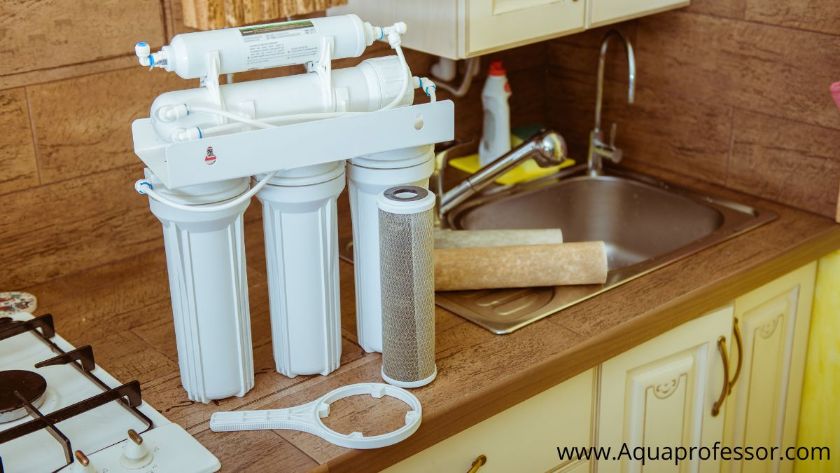
If you are an environmentalist, you will be delighted to know that the Pentair Pelican filtration system does not waste even a single drop of water. There is zero waste of water as there is no need to clean the media weekly.
The primary replacement filters are only required after 5 years of their mentioned lifespan. It happens when the media is fully saturated and can no longer absorb water impurities to give purified water.
Traditional water softeners and ion exchange filters waste hundreds of gallons of water in backwashing and drainage. It is detrimental not only to our nature but to your pockets when you have to pay high water bills.
Stages Of Filtration
The Pentair Pelican Whole House water filter passes through 3 stages of filtration to bring you nothing but the healthiest water. Look at how they work:
The filtration unit requires 25-80 psi pressure to filter correctly. If your incoming water supply does not have proper water pressure, you can install an automatic booster pump to maintain the flow rate. Once the media is saturated, you can replace the filter media conveniently from the stainless steel housings.
Removal Of Contaminants
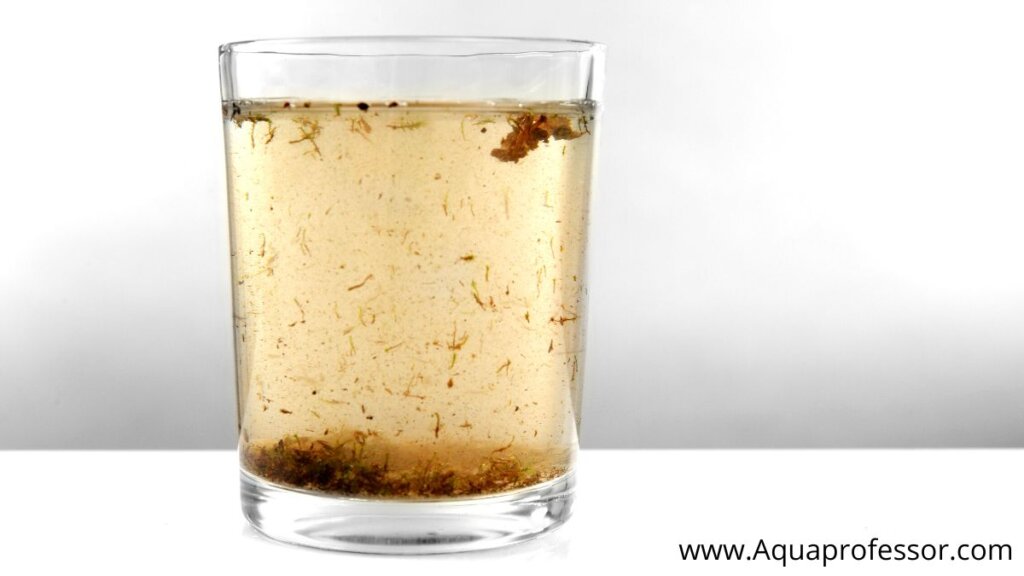
The Pentair Pelican water filtration unit uses an advanced catalytic activated granular carbon filter to remove more chemicals than any other filtration system.
The Pelican can handle all impurities. Be it chlorine, chloramines, dissolved chemicals, impurities, metal ions, or herbicides. You receive great-tasting water that won’t trouble you with any household chores.
Heads Up!
Pentair Pelican PC600-P Filtration unit is NSF/ANSI Standard 42 Certified. It comes with a 5-year performance guarantee and lifetime warranty on parts and tanks.
3️⃣ Crystal Quest Whole House Reverse Osmosis System: Detailed Review
Crystal Quest Whole House RO System is manufactured in the USA. Customers have complimented its high-performance and high-quality water.
Pros
- Filtration Rate of 200-7000 GPD.
- Space Saving
- Easy Maintenance and Filter Replacement
- ISO Certified Components
- Economical
- Large water storage tank
- Available in 3 system sizes and 9 flow rates.
- 95% TDS reduction
Cons
- Electrically driven by a built-in booster pump
- A low Flow rate of 4.8 GPM
- High Price
- Water Wastage
- No NSF Certification
Due to the 4-stage filtration system, this filtration unit can eliminate even the tiniest of impurities and render the water absolutely fresh and purified. There is no more bad taste or odor in the water.
Filtration Capacity
You can get 200 to 7000 GPD (Gallons Per Day) depending on the size and model you choose. The atmospheric water storage tank can hold 160 to 550 gallons of water, making it an excellent choice for fetching clean water quickly.
It has a comparatively low flow rate of 4-6 GPM (Gallons Per Minute), which might not be suitable for every house. The flow rate increases with an increase in size and thus is suitable to serve a family of 6-8 members.
The 200 to 300 GPD unit is suitable for a house with one or two bathrooms. 500 to 2500 GPD units are sufficient for up to four bathrooms. Lastly, 4000 to 7000 GPD units can serve 5 or more bathrooms.
Wastewater Ratio
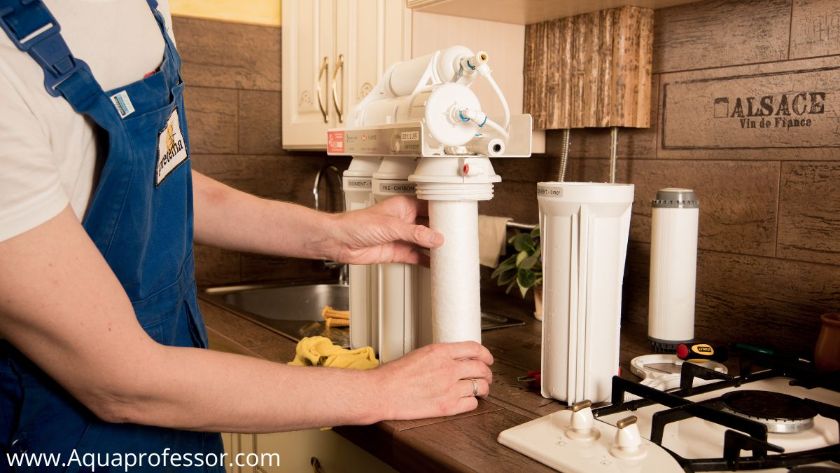
It has a 2:1 waste-water ratio which implies that for every 100 Gallons of water purified, 50 gallons are wasted or drained off. It is not ideal as it is a waste of resources and ultimately leads to higher water bills.
Stages Of Filtration
The Crystal Quest Whole House RO system makes dirty water pass through 4 types of filter media before it is allowed to enter household pipelines.
Here are those 4 stages of filtration and what they do:
You can add extra components to your existing Crystal Quest Unit like UV Sterilizer and Alkalizing post-filters to prevent germs and changes in water pH. They would have to bear additional costs, but it does extend the life of your filtration unit.
Removal Of Contaminants
Due to the 4-stage filtration system, this filtration unit can eliminate even the tiniest of impurities and render the water absolutely fresh and purified. There is no more bad taste or odor in the water. You will probably never complain about water problems after the installation of this partner.
It can tremendously reduce TDS levels and remove harmful chemicals, organic and inorganic solids, heavy metal ions, and chlorine. Here’s the catch, it only works efficiently for water under 2000 TDS levels.
Heads Up!
Crystal Quest Whole House RO Filtration Unit offers 1 year of warranty and a lifespan of 15-20 years if maintained properly. It only has third-party certifications, i.e., it is made of components that are ISO certified.
How Will I Define A Whole House RO Filtration System?
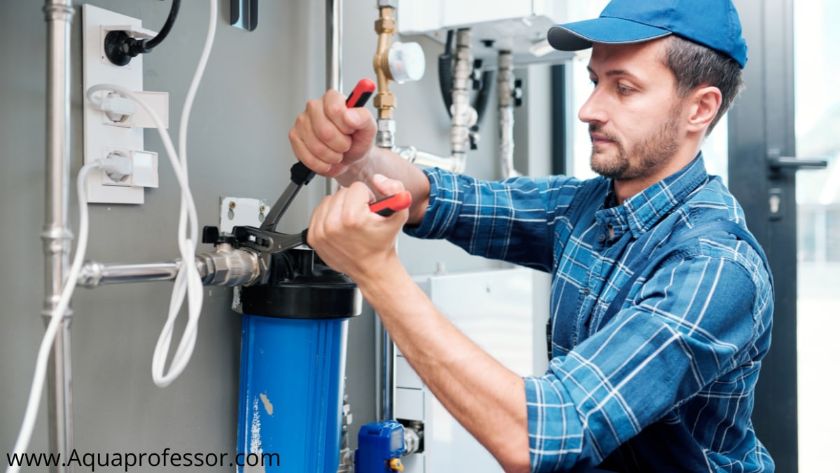
A Whole House Reverse Osmosis Filtration Unit is a system that treats the incoming contaminated water to convert it into safe and consumable water. No other filter process can clarify water as efficiently as a reverse osmosis filter.
Whole house systems work similarly to small countertop or under sink Reverse Osmosis systems but on a larger scale. It is designed to clean and supply large quantities of water to the entire household. They are known to remove up to 99.9% of contaminants.
How Does A Whole House RO Filtration System Work?
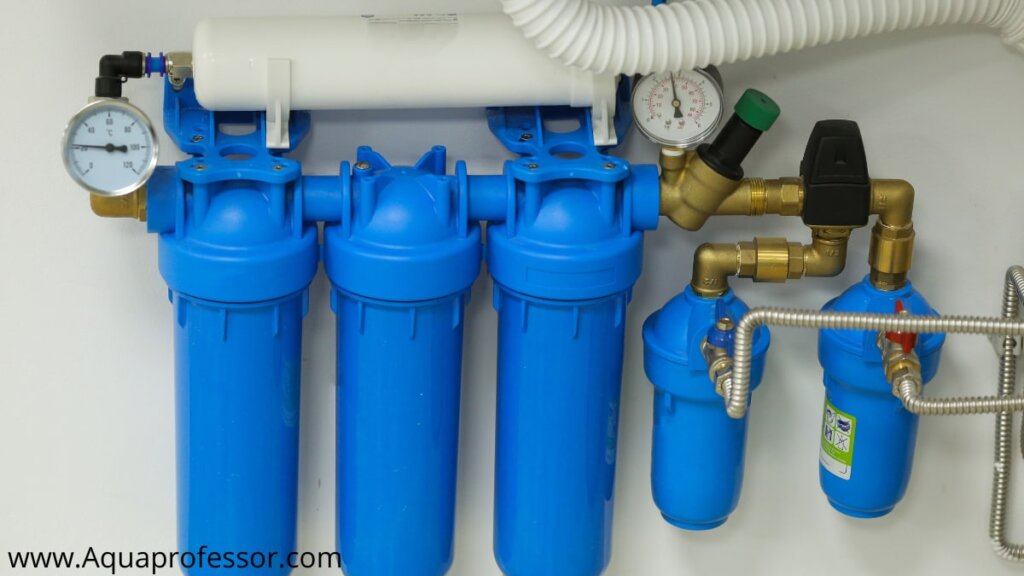
The workings of a Reverse Osmosis system are pretty scientific. It works on the principle that a Semi-Permeable Membrane (SPM) only allows water molecules to pass through. In other words, it’s an impermeable membrane for all other molecules except water.
Let us try to understand what ‘ Osmosis’ is first!
Osmosis is the movement of the solvent molecule (water in this case) across an SPM from higher concentration to lower concentration. Suppose you place an SPM in the center of a container containing dirty water on the left and clean water on the right.
As the water concentration is higher on the clean side, the water starts moving from right to left to maintain equilibrium. But, in the case of Reverse Osmosis, we apply pressure on the dirty water side to force water molecules to pass to the right side.
Thus, more and more clean water is extracted from the dirty water. This clean water is then collected or supplied to the main water pipeline of the house. All the unwanted contaminants and dirt are left behind the semipermeable membrane.
Now you will understand why a thick dirt layer is collected on the filter candles after a few months and needs replacement. The process is pretty simple but efficient.
How To Choose Whole House Reverse Osmosis Systems? [The Expert Buying Guide!]
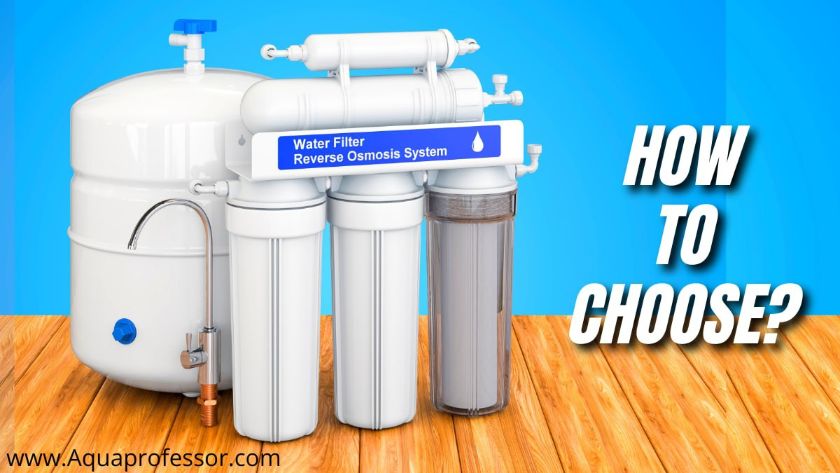
Once you are sure you want a filtration unit for your home, the next question is how? We will answer exactly that in this section. Read ahead to make a well-informed decision.
1️⃣ Determine The Water Quality Of Your Locality
Before you even begin choosing a water filter, you should be well aware of the water quality in your region. The contaminant levels may vary depending on whether you receive water from the municipality or a private well.
A TDS meter can help indicate the total dissolved solids in your incoming cold water pipeline. The city water is usually chlorinated to remove germs and contains fewer water minerals. The water from a nearby well usually has high mineral content and heavy metal ions.
Hard water problems are prevalent. Water containing high quantities of Iron, Magnesium, Aluminum, and Calcium salts is known as hard water. These usually react with house pipelines and accumulate to cause havoc. Thus, it needs to be removed.
2️⃣ Find The Suitable Filter Media
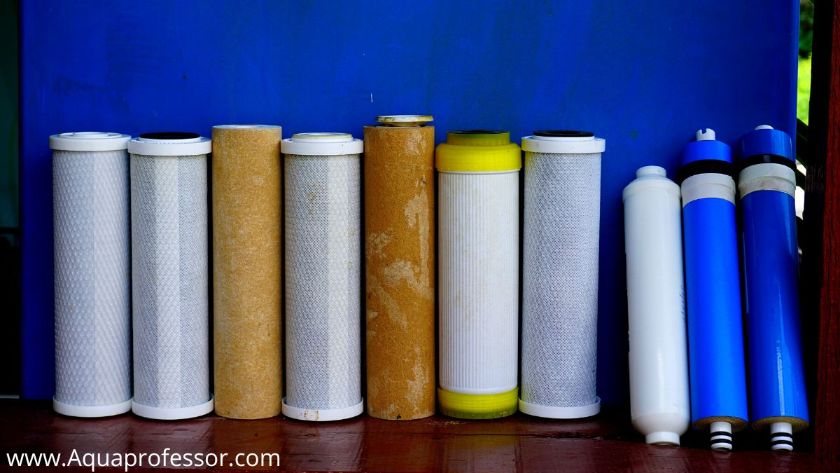
Once you have a fair idea of how many impurities your water has, find the right type of water treatment filter. There are thousands of water filters available on the market. Carbon filters, RO filters, Cartridge filters, Sedimentation filters, Ion-exchange water softeners, and UV filters are the most common.
Sedimentation filters will be enough if the incoming water has lumps of mud, rock, and larger solids. Carbon filters are sufficient to clarify water containing dissolved dirt, mud, and silt. You can opt for activated carbon filters if your water contains microorganisms besides other dissolved solids.
In the case of various water contaminants, three to five-stage filtration will do the trick. UV filters are usually installed along with other units to kill germs by ultraviolet radiation. Ion exchange is a very efficient filtration process, especially for hard water, but expensive and high maintenance.
Now, coming to a Reverse Osmosis water filter that is both budget-friendly and highly efficient in removing a wide range of impurities and ions. Also, remember the goal you wish to accomplish with clean water.
If the water has to be used for drinking, sedimentation and carbon filter alone are not appropriate. When it comes to health, try going the extra mile for your family.
Either install a separate kitchen sink filter or an advanced technology whole house filter like RO for ultrapure drinking water quality.
3️⃣ Daily Water Consumption

Before you make the mistake of installing massive whole-house water filtration devices in your home, know your daily water requirement.
Calculate the amount of water required by one member every day and multiply it with the total number of members in the house. You will know approximately how much water is consumed in your home daily and what quantity of water filter you should choose.
Yes, water filters come in all sizes and capacities to suit your needs. The higher the filtration capacity of a water filter, the higher the flow rate. Usually, 300 Gallons of water per day is sufficient for a family of 3-4 members.
Water is used for several activities, including cleaning, bathing, washing clothes, drinking, etc. So, delays in water production will lead to inappropriate flow rates and time wastage.
4️⃣ Check For Standard Certification

Do you check for Hallmarks on your jewelry to check their originality? Well, something similar guarantees the safety of water filtration systems too. The National Sanitation Foundation, along with the American National Standards Institute, provides certification to Water Filter companies.
The water filter must pass strict tests and follow guidelines set by NSF and ANSI to gain accreditation and be certified as a safe filtration unit. NSF/ANSI certificate is essential to gain the trust of the customers and prove the efficiency of a filtration system.
Thus, we would recommend you give priority to NSF/ANSI-certified products while purchasing. It will give you a sense of surety and satisfaction that your family is consuming healthy water.
5️⃣ Whole House Reverse Osmosis Systems Cost
A significant factor for many families is the annual cost. Not everyone can afford high-end water filtration units. You spend a handsome amount of money purchasing the product. After that, you have to bear the installation cost and small but regular maintenance charges.
Maintenance costs vary from filter to filter. Some filters require regular cleaning to enhance their functioning, while some demand new filter media. Cartridge-based filters require filter replacement every 2 to 6 months. Ion-exchange filters need regular replacement of salt in their brine tank.
The price range of Whole house water filtration units starts from a few hundred dollars and can go up to a couple of thousand dollars. The price depends on the filter’s type, model, build, capacity, and size. Big brands charge big bucks in exchange for their services.
Almost every water filter comes with a DIY installation guide, but that does not mean you will be able to install it on your own. Hiring professional help is recommended to avoid any leakage or breakage. Plumbers are trained to make necessary alterations to the pipelines if needed.
6️⃣ Lifespan and Warranty
Every product has a different lifespan. In the case of water filters, the lifespan of the filter membrane housing and filter media is different. The filter media must be replaced after 2 – 6 months, depending on the water quality and usage.
Fact:
A good Reverse Osmosis filter can last for 10 to 15 years, given that they are adequately maintained. They come with 2 to 10 years of repair warranty. Some companies also offer a 30-day satisfaction guarantee to their customers.
Remember to read the terms and conditions before claiming anything against the warranty. Some companies void your warranty if you have not installed the water filtration unit as per their instructions mentioned in the manual.
Whole House Water Filters vs Point-Of Entry Filters: Differences Explained!
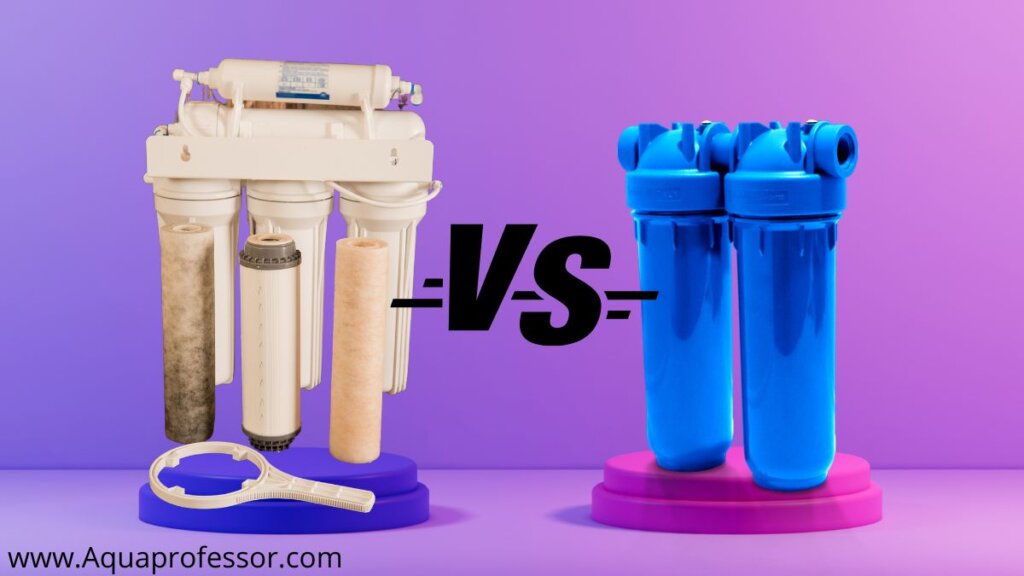
Depending on the location of installation, filters can be broadly classified as Point OF Entry (POE) Filters and Point Of Use (POU) Filters. As the name suggests, Point-Of-Entry filters are installed at the very beginning of the main house water pipeline and thus provide clean water to the entire house.
Point-Of Use filters are installed at the sight of use. For example, the tap from where you will draw water. Kitchen sink and Countertop filters are types of Point-Of-Use filters, while Whole House RO water filtration systems and salt-based water softeners are types of Point-Of-Entry filters.
There is another crucial detail that many articles forget to mention. The POE filters make the water for drinking devoid of all the healthy minerals essential for our body. Water with calcium minerals and iron salts is good for your bones and blood.
So, here POU filters can come to the rescue. Sink RO systems come with a remineralization tank that puts all the essential minerals back into the water after the filter stages.
Both whole house filtration units (POE) and Point-of-Use Filters have advantages and disadvantages.
Let’s look at them one by one for better understanding:
Whole House Water Filters: Pros and Cons
Pros
- One-time investment for the entire house.
- Improves overall quality of water to be used.
- High capacity
- It extends the life of other water appliances.
- Efficient and time-saving
- No stains on clothes and utensils.
- Gentle on skin and hair.
Cons
- Costly
- Difficult to install
- Additional components may need to be attached to the house units.
- Wastage of Water
- It takes up more space
- Requires adequate water pressure
When Should You Use A POE (Whole House) Water Filter?
Once you know about the Whole House water filtration system, you should see if your house needs one. Here are your cues to install a point-of-entry water filter:
Point-Of-Use Water Filters: Pros and Cons
Pros
- Budget-friendly
- Easy installation process and maintenance
- Stylish space-saving design.
- No need to buy bottled water
- Efficient
Cons
- Low Capacity
- Frequent filter replacement
- Only one source of high-quality water
When Should You Use A POU Water Filter?
There can be a need to install a separate unit for a particular faucet at your home. Luckily, there are numerous Point-Of-Use water filters to choose from.
Here’s when you should buy one:
Best Whole House Reverse Osmosis Water Filter System: FAQs
Q1. How Much Does A Typical Whole House Reverse Osmosis System Cost?
Ans. A Whole House Reverse Osmosis water filter system costs somewhere between a few hundred dollars and a couple of thousand dollars. Yes, it gets expensive with brand, capacity, type, and size.
Make sure you buy a whole house filter only because you need it, as it is a significant investment. You would also have to bear monthly filter replacement costs besides the purchase cost.
Q2. Is Whole House Reverse Osmosis Worth It?
Ans. It is definitely worth it, given you are facing water quality issues. You will immediately notice a massive difference after installing a Reverse Osmosis unit. It is highly efficient and removes 99.9% of impurities.
If you constantly face water-related problems at home, such as water stains, clogging, and scaling, then installing a Whole House Reverse Osmosis water filtration system is a wise decision. Once you start saving money because of its proficiency, you will realize its worth too.
Q3. Can I Install A Whole House Reverse Osmosis System Myself?
Ans. We know that the DIY installation kit instructions might seem doable, but it is recommended to keep a handyman along. Some water filters have plastic housing, which might crack or break if installed by an unprofessional.
So, call a plumber now if you don’t want to see your 1000 bucks go down the drain in pursuit of saving 100 bucks of professional help!
Plus, some whole-house water filtration companies void your warranty if you install the filtration unit on your own. According to them, a customer is only eligible for a warranty if their filter has been installed correctly by a trained professional.
Q4. How Long Does A Typical Whole House Reverse Osmosis System Last?
Ans. A good company Whole House Reverse Osmosis system can last for 10 to 15 years. It is an impressive amount of lifespan for a filtration unit. But that’s only possible with regular maintenance. Depending on water usage and model type, you would have to replace its filter media every 2-6 months.
Q5. How Big Of A Reverse Osmosis System Do I Need?
Ans. Well, that totally depends on your situation. Look at the number of people living in your house, the number of hours you all spend at home and your daily water requirements. You will have a fair idea about what capacity of the Reverse Osmosis Water system you should choose.
Usually, 300 Gallons capacity is sufficient for a family of four members. So, buy a size that is appropriate for your family size. The same logic applies to light commercial units.
Sayan understands that access to clean water doesn’t have to be costly.
He strives to provide knowledge of water purification techniques in the simplest way possible so that we can lead a healthy life without breaking our bank.

